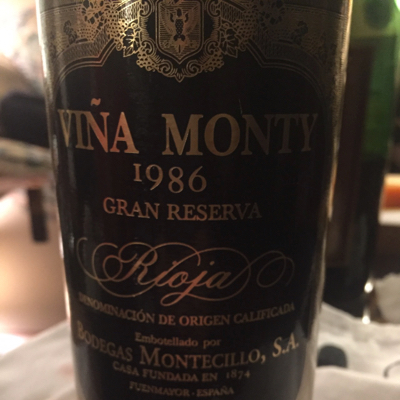Wines of Spain and Portugal
Spain and Portugal wine industry basics
In WSET on 27 Apr 2017
With my WSET Diploma Unit 3 exam looming in the not-so-distant future, I’ve been practicing writing essays on a variety of wine industry topics, and friends suggested I post them here. This question asked for a paragraph or two on several Iberian wine concepts.
Consejo Regulador
This is the governing body (literally “regulatory council”) that administers wine quality designations in Spain. A CR exists for each DO and DOCa (appellation) and is composed of impartial members who ideally represent the interests of growers, negotiants, and producers alike. These members investigate wine ingredients and production details to ensure quality, then report these details to the government at the national level. However, each CR is responsible for determining the quality regulations for its region at the local level––and enforcing them. Such regulations usually include vineyard yields, varieties used, vine density, and other winemaking factors, and they must be at least as strict as national laws.

Tempranillo
No grape is more associated with Spain internationally than tempranillo. Native to Spain and nearly ubiquitous in much of the country, tempranillo may be found in single-varietal wines at all price levels or blended with other grapes, often mazuelo, graciano, and garnacha in Rioja. The finest wines from tempranillo are made in Rioja and Ribera del Duero, but excellent examples can be found in Toro, Navarra, and other DOs. In the Douro region of Portugal, tempranillo can be found typically in blends with the name tinta roriz.
Tempranillo’s signature flavors are rustic leather, tobacco, dark fruit, and a little cedar, with more earth and graphite notes coming through in high-end aged examples, but it can be a bit of a chameleon in both flavor and structure from region to region and producer to producer. Typically, though, tempranillo has firm tannins and good acidity, making it often a good candidate for age-worthy wines. Top names in tempranillo include Pingus and Marques de Riscal.
Rosé
Spanish rosé, called rosado, isn’t nearly as easy to find internationally as its French counterpart, but as the rosé craze sweeps the world it is certainly on the rise. Rosado is generally fun, inexpensive, and simple, like all rosé trending dry but fruity, and relatively dark and full-bodied. Garnacha makes a fine rosé at low cost, and tempranillo is also common, especially in Navarra and Rioja, but the trend of using more and more international varieties like cabernet and merlot has not escaped rosado. Fortunately, it’s getting easier to find interesting lesser-known grapes in rosé such as prieto picudo and bobal. As fun as it can be to try all the various rosado out there, the category is still quite new and somewhat hit-or-miss in quality. I love Ameztoi Rubentis Txakolina from the Basque region.
In Portugal, the brands Lancers and Meteus were once hugely popular producers of rosé, but their semi-sweetness lacks appeal to today’s dry rosé drinkers. These days if you’re drinking a Portuguese rosé it’s likely to be a Vinho Verde made from espadeiro and padeiro grapes.
Albariño
As the iconic white wine of Spain, Albariño put Spain’s “green” northwest region on the map with its highly aromatic flavors and zippy acidity. The best come from Rias Baixas, a region of Galicia that is cooler and wetter than inland Spain. Fortunately, albariño is fairly rot resistant and thick-skinned, so this climate suits it nicely. Albariño is rarely oaked; it’s meant to be consumed fresh and young, ideally with the seafood dishes popular in its maritime homeland. In Portugal, the grape is called alvarinho and easy to find in Vinho Verde wines. Martin Codax is the gold standard albariño, but I’m a fan of Bodegas Eidosela’s Neboa.
Vinhos Regionais
Portugal’s DOC system generally resembles the French AOC system. The Vinho Regionais category is the IGP level, referring to wines that come from the latest regions and undergo slightly more flexible quality standards. Declassified DOC wines find a home here with a more affordable price point, as do wines made from international varieties rather than Portugal’s beloved indigenous grapes. The wines are often labelled by variety, unlike with DOC wines. The most important VR categories are Alentejano, Tejo, Peninsula de Setubal, and Tras-os-Montes.
Gran Reserva
Rioja is still Spain’s greatest and most internationally well-known wine region. Known for bold, earthy red blends with strong tannins, good acid, and a focus on the tempranillo grape, Rioja wine is heavily influenced by the signature tendency to age and hold wines until they’re ready to drink. More than 40% of the wine produced in Rioja is labeled with one of the three aging levels: Crianza, Reserva, or Gran Reserva (These levels are used in other regions and aging requirements vary, but Rioja wine is near-synonymous with the terms), most of which is red.
As the highest quality level of Rioja red wine, Gran Reserva wines are required to be aged a minimum of five years before release, of which at least two must be spent in oak. Many winemakers choose to age the wines even longer, sometimes a decade or more, before release. American oak was long preferred, in 225L casks, because historically Spain could acquire it easily and cheaply from its American colonies. However, French oak is becoming more and more popular in Spain and the typical American oak notes of coconut and dill are giving way to French oak’s vanilla and toast. Wines at this level are only made in special vintages, and generally have the most aging potential. They are gritty, tannic, and expensive. For a gift, I like anything from Lopez de Heredia.